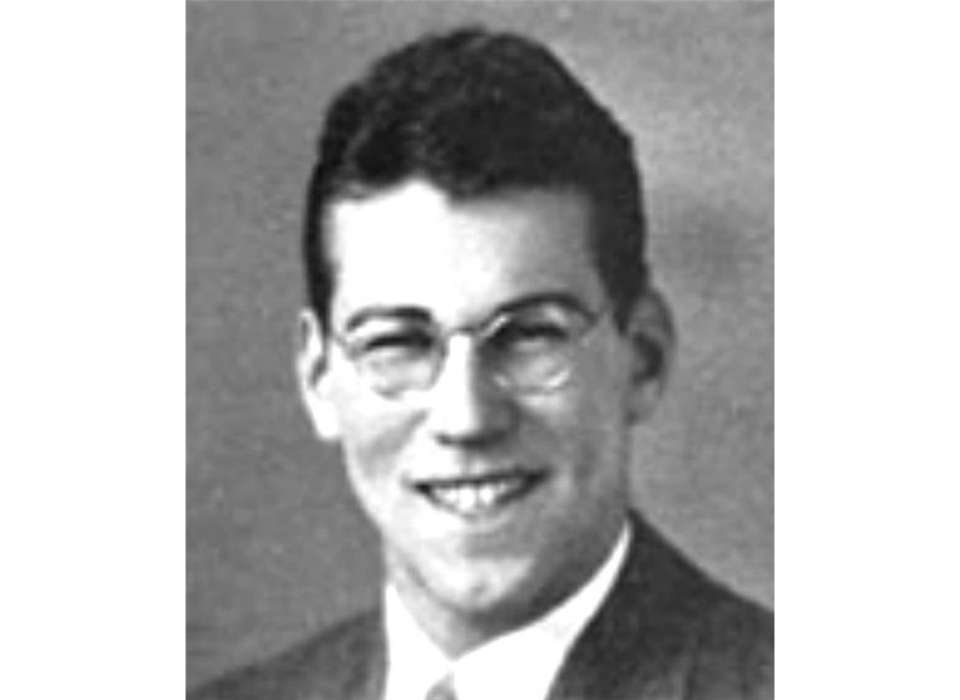Top image: Portrait of Benjamin Salomon, Courtesy of the Congressional Medal of Honor Society.
Benjamin Salomon was born September 1, 1914, into a Jewish family in Milwaukee, Wisconsin. He attended Marquette University for a year in Milwaukee before transferring to the University of Southern California to finish his undergraduate degree. In 1937, he graduated from the USC School of Dentistry and began practicing the same year.
In the fall of 1940, soon after the Selective Service Act became effective, Salomon was drafted into the US Army as a Private assigned to the 102nd Infantry Regiment. Within a year, he was promoted to Sergeant and put in charge of a machine gun section. In 1942, Salomon became an officer in the Dental Corps and soon was sent to Hawaii, where he was commissioned a Second Lieutenant of infantry. In May 1943, after working for several months in a hospital, Salomon was assigned as the regimental dental officer of the 105th Infantry Regiment, 27th Infantry Division.
After being promoted to Captain in 1944, Salomon was deployed in June to Saipan in the Mariana Islands with the 105th Infantry. At the time, Saipan was an active combat zone with little need for a regimental dentist, so when the 2nd Battalion’s surgeon was wounded in a mortar attack on June 27, 1944, Salomon immediately volunteered to replace him.
As American forces worked to establish control over Saipan in the summer of 1944, the 2nd Battalion positioned themselves on western coast near Tanapag. On July 6, 1944, after receiving intelligence reports that the Japanese were planning to attack that night, the 2nd Battalion established a perimeter consisting of a series of foxholes protected by artillery. Salomon created a medical aid station in a small tent about 50 yards behind the forward foxholes and about 30 yards from the shoreline.
On July 7, 1944, at 0500, an estimated 3,000–5,000 Japanese forces attacked the 105th Infantry Regiment’s 1st and 2nd Battalions. Although both units fought furiously, enemy forces soon penetrated their combined perimeter, inflicting an overwhelming number of causalities. While Salomon tended to these victims, several Japanese soldiers managed to get inside the medical tent. In an act of heroism, Salomon fought off the enemy while ordering the evacuation of his patients. In order to hold off the Japanese and ensure a safe withdrawal, Salomon, armed with a single rifle, continued to fight alongside the few American soldiers who were still stationed inside the perimeter. After four men manning a heavy machine gun were killed, Salomon singlehandedly took control of it, killing more than 90 Japanese soldier before being fatally shot.
The fighting continued throughout July 7–8 before the United States was able to regain its position. US forces suffered a more than 83 percent casualty rate, with over 900 Americans either dead or seriously wounded. Salomon’s body was found on July 8 behind the heavy machine gun where he was last seen. He had been shot 24 times before he died, and even after being wounded, it appeared that he had continued to move the machine gun to gain a clearer position for firing.
At the time, according to the rules of the Geneva Convention, medical officers were not authorized to take up arms against the enemy. Therefore, even though he had displayed an extraordinary dedication to his patients and fellow soldiers, Salomon was deemed ineligible to receive a medal for valor. Although several recommendations were submitted between the 1950s and 1990s to grant Salomon the honor he deserved, it was not until 1998 when Dr. Robert West of the USC School of Dentistry submitted a recommendation for Captain Salomon to receive the Medal of Honor that the medical officer limitation for the award was waived. Four years later, on May 1, 2002, President George W. Bush presented Salomon’s Medal of Honor posthumously to Dr. West, who received it on behalf of the USC School of Dentistry.
Captain Salomon’s Medal of Honor citation is as follows:
“For conspicuous gallantry and intrepidity at the risk of his life above and beyond the call of duty. Captain Ben L. Salomon was serving at Saipan, in the Marianas Islands on July 7, 1944, as the Surgeon for the 2nd Battalion, 105th Infantry Regiment, 27th Infantry Division. The Regiment's 1st and 2nd Battalions were attacked by an overwhelming force estimated between 3,000 and 5,000 Japanese soldiers. It was one of the largest attacks attempted in the Pacific Theater during World War II. Although both units fought furiously, the enemy soon penetrated the Battalions' combined perimeter and inflicted overwhelming casualties. In the first minutes of the attack, approximately 30 wounded soldiers walked, crawled, or were carried into Captain Salomon's aid station, and the small tent soon filled with wounded men. As the perimeter began to be overrun, it became increasingly difficult for Captain Salomon to work on the wounded. He then saw a Japanese soldier bayoneting one of the wounded soldiers lying near the tent. Firing from a squatting position, Captain Salomon quickly killed the enemy soldier. Then, as he turned his attention back to the wounded, two more Japanese soldiers appeared in the front entrance of the tent. As these enemy soldiers were killed, four more crawled under the tent walls. Rushing them, Captain Salomon kicked the knife out of the hand of one, shot another, and bayoneted a third. Captain Salomon butted the fourth enemy soldier in the stomach and a wounded comrade then shot and killed the enemy soldier. Realizing the gravity of the situation, Captain Salomon ordered the wounded to make their way as best they could back to the regimental aid station, while he attempted to hold off the enemy until they were clear. Captain Salomon then grabbed a rifle from one of the wounded and rushed out of the tent. After four men were killed while manning a machine gun, Captain Salomon took control of it. When his body was later found, 98 dead enemy soldiers were piled in front of his position. Captain Salomon's extraordinary heroism and devotion to duty are in keeping with the highest traditions of military service and reflect great credit upon himself his unit and the United States Army.”
Jennifer Popowycz, PhD
Jennifer Popowycz, PhD is the Leventhal Research Fellow at The National WWII Museum. Her research focuses on the Eastern Front and Nazi occupation policies in Eastern Europe in World War II.
Cite this article:
MLA Citation:
APA Citation:
Chicago Style Citation:







![Max Fuchs, New York City cantor, sings as Rabbi Sydney [sic] Lefkowitz, Richmond, VA, conducts the first Jewish services from Germany.](/sites/default/files/styles/max_650x650/public/2025-10/image1.jpg)

